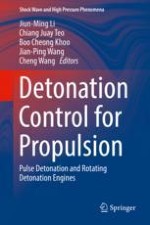2018 | OriginalPaper | Chapter
9. On the Investigation of Detonation Re-initiation Mechanisms and the Influences of the Geometry Confinements and Mixture Properties
Authors : Lei Li, Jiun-Ming Li, Chiang Juay Teo, Po-Hsiung Chang, Van Bo Nguyen, Boo Cheong Khoo
Published in: Detonation Control for Propulsion
Publisher: Springer International Publishing
Activate our intelligent search to find suitable subject content or patents.
Select sections of text to find matching patents with Artificial Intelligence. powered by
Select sections of text to find additional relevant content using AI-assisted search. powered by
